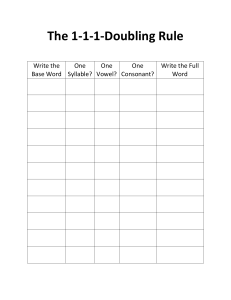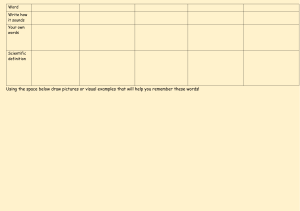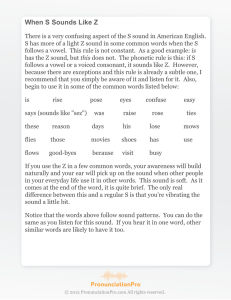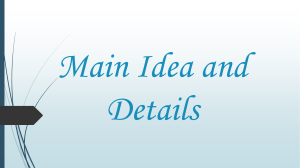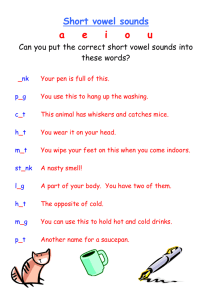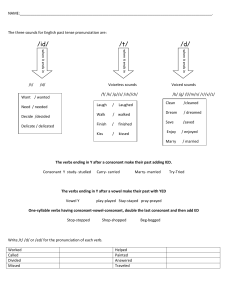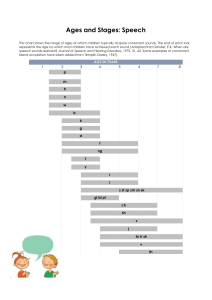Reading & Writing: Processes, Benefits, & Connected Discourse
advertisement
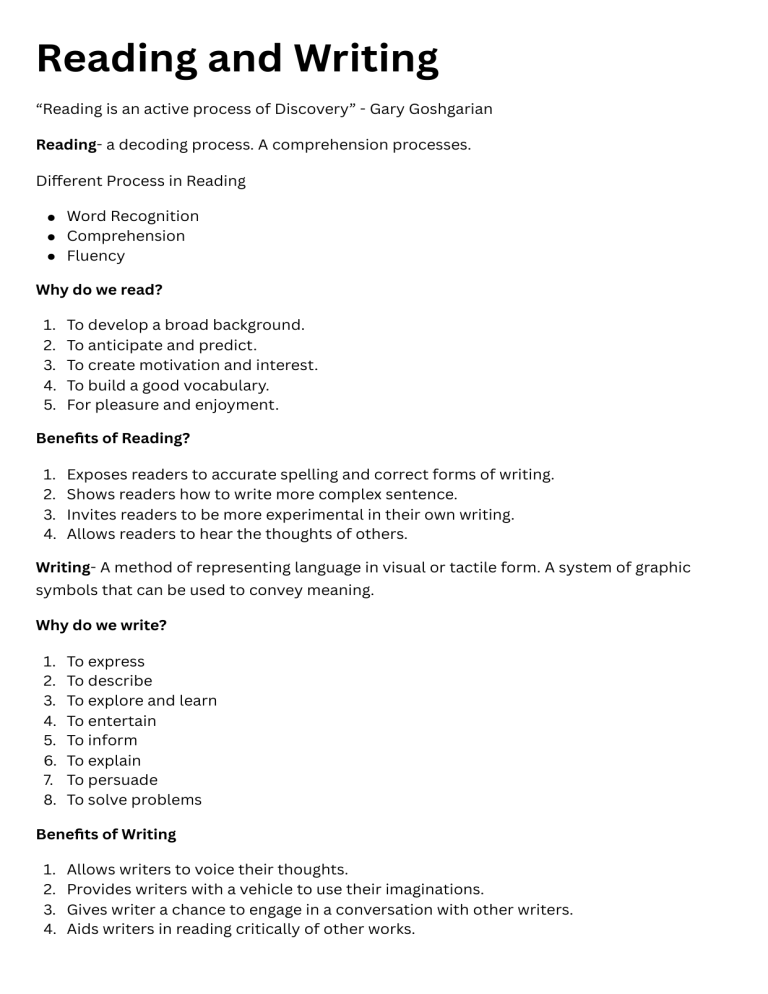
Reading and Writing
“Reading is an active process of Discovery” - Gary Goshgarian
Reading- a decoding process. A comprehension processes.
Different Process in Reading
Word Recognition
Comprehension
Fluency
Why do we read?
1. To develop a broad background.
2. To anticipate and predict.
3. To create motivation and interest.
4. To build a good vocabulary.
5. For pleasure and enjoyment.
Benefits of Reading?
1. Exposes readers to accurate spelling and correct forms of writing.
2. Shows readers how to write more complex sentence.
3. Invites readers to be more experimental in their own writing.
4. Allows readers to hear the thoughts of others.
Writing- A method of representing language in visual or tactile form. A system of graphic
symbols that can be used to convey meaning.
Why do we write?
1. To express
2. To describe
3. To explore and learn
4. To entertain
5. To inform
6. To explain
7. To persuade
8. To solve problems
Benefits of Writing
1. Allows writers to voice their thoughts.
2. Provides writers with a vehicle to use their imaginations.
3. Gives writer a chance to engage in a conversation with other writers.
4. Aids writers in reading critically of other works.
5. Motivates writers to engage with the texts they are reading.
Text as Connected Discourse
Text- It refers to written or printed pieces of work. It came from the Latin word texere, which
means “to weave”.
Discourse- It refers to a connected series of utterances in a written or spoken cmmunication.
It came from the Late Latin word, discursus, which means “exchange of ideas”.
Text
Discourse
Non interactive in nature.
Agent is not necessary in text since
text only aims to convey or impart
information to the readers.
Analyzing text involves the study of its
grammatical cohesion and structure of
sentences.
Active in nature
Agent is necessary in discourse since it
aims to enable conversation between
people.
Analyzing discourse involves the study
of its agents, social purpose and
medium.
Connected Discourse also known as connected speech, refers to sounds that are
continuously uttered and form spoken conversations.
Rules in Connected Discourse
1. Linking
This involves blending of a word onto another in a connected discourse. It comes in three
forms: Consonant to Vowel Linking, Vowel to Vowel Linking and Consonant to Consonant
Linking.
Consonant to Vowel Linking
When a word ends with a consonant sound and the word next to it begins with a vowel
sound, connect the final consonant sound of the word to the initial vowel sound of the
next word, making it sound as if the next word starts with the final consonant sound ofthe
initial word.
Examples:
• "Both of you are grounded!" [Bothof]
• "Good evening, everyone!" [Goo deveningeveryone]
•"That's such a good idea!" [sucha goodidea]
Vowel to Vowel Linking
When a word ends with a vowel sound and the word next to it begins with another vowel
sound, insert an extra sound to make the transition between the vowel sounds smooth
and to ensure that both vowel sounds are pronounced completely.
A short /j/ or /w/ or /r/ sound is often added between two vowel sounds that come
consecutively. Such additional sound is called an intrusive sound as it intrudes or inserts
itself between two consecutive sounds.
Examples {J}
• I am very disappointed. [1-j-am]
• This can 't be delayed, it is highly important. [highly-j-important]
• I suggest we try again. [try-j-gain]
Examples {W}
• Do you plan to go out tonight? (go-w- out]
• Do I make myself clear? [do-w-I]
• He asked how old I am. [how-w-old]
Examples {R}
• She buys pasta and sauce in the supermarket. [pasta-r-and]
• The issue draws more media attention. [media-r-attention]
• We saw a woman run by. [saw-r-a]
Consonant to Consonant to Linking
When the final consonant sound of a word is the same as the initial consonant sound of
the word next to it, pronounce both consonant sounds together as one.
Examples:
• Can you check my web browser? /bb/
• This is going to be a good day! /dd/
• There is no way I'll eat that. /ww/
2. Assimilation
This involves blending of two sounds which leads to the formation of a new sound in a
connected discourse. It comes in three forms progressive assimilation, regressive
assimilation, and coalescence assimilation.
Progressive Assimilation
When the final sound of a word influences the initial sound of the word next to it, the
simulation is dealt with from left to right.
Examples:
• Why didn 't she read them all? [read-em
• I put them where they belong. [put-em]
• He kept on going even though I was hurt. [even-o]
Regressive Assimilation
When the initial sound of a word influences the final sound of the word preceding it, the
simulation is dealt with from right to left.
Examples:
• Relyn was still his girlfriend. [waz still]
• Give me my phone back. [gimme]
Coalescence Assimilation
When the final sound of a word and the initial sound of the word next to it influence each
other and create a new sound with features from both sounds, the simulation is dealt
with from both directions.
Examples:
• I'll see you all next year. [necks cheer]
• I made your breakfast today. [major]
• Could you come over? [cud ju]
3. Elision
This involves omission of a sound in a connected discourse. The sounds /t/ and /d/ are
some examples of sounds commonly omitted between two consecutive sounds.
Examples:
• Don 't attempt to jump over the water. [attemp]
• Make a left turn now. [lef turn]
• Prince is such a handsome young man. [hansome]
4. Reduction
This involves stressing the strong syllables in content words and reducing the effort in
pronouncing function words in a connected discourse. This results to the omission of
some sounds. Contraction is a form of reduction.
Examples:
• I' m out of here. [outta]
• I don 't know what happened. [dunno]
• I don 't want to talk about it. [wanna]
Linking: Think of it like smoothly connecting words when you speak. For example, instead of
saying "high heels" with a pause in between, you'd say it more like "highheels" where the "h"
flows into the "h."
"I scream" might sound like "I-scream."
"Good afternoon" could be said as "Good-afternoon."
"high + heels" → "high heels"
"big + apple" → "big apple"
"good + afternoon" → "good afternoon"
Assimilation: This is when sounds change a bit to fit in better with nearby sounds. For
example, saying "impossible" might sound more like "impahssible" where the "m" sort of
blends into the "p."
"Ten pounds" might be pronounced as "tem pounds" where the "n" sound gets closer to
the "p" sound.
"Best friend" could sound like "bes-friend" where the "t" sound turns into an "s" sound.
"in + possible" → "impossible"
"un + fortunate" → "unfortunate"
"ham + burger" → "hamburger"
Elision: Imagine skipping or leaving out sounds or parts of words to make speaking easier or
faster. For example, instead of saying "going to" all the way, you might say "gonna" and skip
the "ing" and "to."
"I am" can become "I'm" by dropping the "a" and replacing it with an apostrophe.
"Going to" often becomes "gonna" by dropping the "ing" and "to."
"going + to" → "gonna"
"I + am" → "I'm"
"could + have" → "could've"
Reduction: This is about making sounds shorter or weaker, especially in unstressed parts of
words. For instance, in the word "photograph," the second part "-graph" might sound more
like "gruhf" instead of a full "graph."
"Television" might be pronounced more like "tel-uh-vizh-un" where the "i" sound
becomes shorter and weaker.
"Library" could be said as "li-bree" where the "brar" part gets reduced to just "bree."
"photograph" → "photo-graf"
"vegetable" → "veg-tuh-bul"
"celebrate" → "cuh-leh-brate"
Elision:
"I'll" instead of "I will"
"We're" instead of "We are"
"Can't" instead of "Cannot""
I'm" instead of "I am"
"He's" instead of "He is"
"They'll" instead of "They will"
Linking:
"Fish and chips" pronounced as "fish 'n chips"
"High school" pronounced as "high school"
"Last night" pronounced as "las' night"
"Good morning" pronounced as "goo'd morning"
"Just ask" pronounced as "jus' ask"
"Next time" pronounced as "nex' time"
Assimilation:
"Ten pounds" pronounced as "tem pounds"
"Handbag" pronounced as "hamdbag"
"Good boy" pronounced as "goo' boy"
"Best friend" pronounced as "bes' friend"
"Big dog" pronounced as "bigg dog"
"Own name" pronounced as "ow'n name"
Reduction:
"Wanna" instead of "Want to"
"Gonna" instead of "Going to"
"Kinda" instead of "Kind of"
"Gotta" instead of "Got to"
"Wanna" instead of "Want to"
"Shoulda" instead of "Should have"
TEXT AS CONNECTED DISCOURSE
Text becomes a connected discourse when it is discussed by two or more people in a spoken
conversation.
Techniques in Selecting and Organizing Information
Selecting and organizing information is an important step to be done before actually
proceeding to the task of writing a text. This step helps achieve an easy and smooth writing
process. Some of the tools that can be used in accomplishing this step are brainstorming list,
graphic organizer, topic outline, and sentence outline.
Brainstorming- This is one effective way to generate ideas on a topic to write about.
It is commonly done by writing down words, experiences, names of people or places, events,
or whatever that comes to mind because they may be useful for the composition.
Graphic Organizer- This is a tool made up of diagrams or symbols that provides organized and
systemized set of information.
It shows which pieces of information are similar and should be put together, as well as those
which are different and should be set apart. It may also express relationship between pieces
of information.
Some forms of Graphic Organizer
1. Chart- This is a representation of a set of information in the form of pie slices, bars, or
lines. It is typically used to show numerical results in surveys, portions of certain choices
or tasks, or the increase or decrease of a certain sale and the like.
2. Venn Diagram- It is typically used to compare the similarities and contrast the
differences between certain subjects or concepts.
3. Flow Chart- This is a type of diagram that aims to show the process that one has to follow
from the beginning to end to accomplish certain tasks or procedures.
4. KWL Chart- This is a graphic organizer that is designed to help identify what a learner
already knows, what he/she wants to know, and what he/ she learned.
5. Spider Map- This is a graphic organizer that shows the main idea in the center and its
sub-ideas on each leg that surrounds the main idea.
6. Outline- It is an efficient tool that can be used to organize information easily. An outline
shows the actual flow of the composition from the introduction to the conclusion. It also
serves as a guide in the writing process itself as it shows the skeletal framework of the
composition.
The contents of an outline may be set using two methods of numbering. Both of these
methods show the similarities and differences between the contents of an outline. These
methods are called the traditional method and the modern method.
The traditional method makes use of Roman numerals, big and small letters of the
alphabet, and Hindu-Arabic numerals. On the other hand the modern method only
makes use of Hindu-Arabic numerals. The following shows an example of a topic outline
set in the traditional method and in the modern method.
Patterns of Development
Different Patterns of Development
Narration
Description
Definition
Exemplification
Classification
Comparison and Contrast
Cause and Effect
Problem solution
Persuasion
Narration
It involves telling a story, account or event.
It describes about how, when and where something happened, which attracts and holds
the readers’ attention and interest.
It can be factual and may involve true and actual information.
It can be fictional and may involve imaginary or made-up information.
The main purpose of this is to narrate a story, account, or event usually in chronological
order that unfolds the relationship of each happening in time and shows how the
previous happening is connected to the succeeding ones.
A narrative paragraph contains action verbs and transition words that indicate time or
sequence. The following are some transition words used to signal time or sequence order.
Narration
First, second, etc.
After, next, then, eventually, soon
Meanwhile, a short time later
During, at the same time, simultaneously
Suddenly, instantly, momentarily
The next day, following, thereafter.
In the end, ultimately
The Narration is usually used in the humanities. In a writing class, for instance, you can write
about a particular event or situation.
Example:
Last night, I was walking on my way home when it suddenly rained. I forgot to bring my
umbrella, so I ran to avoid getting completely soaked in the rain. Not seeing where I was
going, I fell into a puddle of water. Then a guy helped me stand up. When I looked up, I
recognized him. Momentarily, I forgot that I was soaking wet and that I was very cold. He
offered to walk me home, and I just nodded. The next day, he and I saw each other at school.
At last, we talked like old friends.
Explanation:
The narrative paragraph tells a part of a story in the first person. It shows a sequence of
events connected by transition words like then, suddenly, finally, momentarily, and the next
day. Also, action verbs like was walking, ran, and fell are used to indicate movement.
2 Types of Narration
Brief Narration
Detailed Narration
This is also known as “clipped narration”,
This is also known as “paced narration”,
where the writer only writes the most
important event and gives the general
where the writer writes about each event
and provides specific details about what
picture of what happened. This type of
narration is concise and yet informative.
happened. This type of narration is very
vivid and complete.
Description
This involves putting the image of an object, person, place, scene or event into words.
It appeals to the readers’ senses and allows them to experience what is being described
by the writer in terms of sight, smell, hearing, touch and/or taste.
It also shows the relationship of the whole and its parts and focuses on featuring the
differences of objects, people, places, scenes or events with the others of the same class.
For the descriptive text to be effective in holding the readers’ interest, it has to show
vivid and clear descriptions.
A descriptive paragraph has concrete and specific details, which are carefully chosen by
a writer to paint a picture in the mind of the reader.
Literary analyses, descriptive essays, business plans, lab reports, and research papers are
some examples of writing genres that use descriptive paragraphs.
Example:
The tarsier has soft, grayish fur. It has bat-like ears and a long, rat-like tail. It only stands
about 100 millimeters.
Example:
It feeds on insects like crickets, beetles, and termites, and on small animals, too, like lizards,
frogs, and small birds. Also, it is capable of turning its head 180 degrees and jumping
backward with accuracy..
2 Types of Description:
Objective
Subjective
This type is informative, scientific,
technical and factual. Hence, it is
This type is suggestive or opinionated.
Hence, it is connotative in nature and
denotative in nature and no opinions or
emotions are injected in this type of
description.
reveals the personal views and emotions of
the writer.
Example of Objective:
1. My friend and I went to Sabang Beach, one of the famous tourist spots in Baler. Sabang
Beach is a landform alongside a body of water that the people usually visit to go
sunbathing, swimming or surfing.
2. The water there is not as clear as the water on the other beaches, but the waves there are
continuous and high which attract a lot of tourists especially those who are professional
surfers and enthusiasts like.
Example of Subjective:
1. My friend and I went to Sabang Beach, one of the famous tourist spots in Baler. Sabang
Beach is a beautiful place. A lot of people go there to have fun and take photos with their
friends and family.
2. It is a great place to relax and enjoy relieving stress from work. Children and adults alike
take surfing lessons on the beach, and they look like they are having a lot of fun despite
falling off their surfboards a few times.
3. A mountain full of trees also serves as a beautiful backdrop of the beach which can surely
leave anyone in awe and take their breath away.
Definition
This pattern of development inwriting involves explaining the meaning of a word, term,
concept or subject depending on the given context.
Its main purpose is to establish a clearer meaning of a word, term, concept or subject in
comparison with the other members of its class in either a simple or an elaborative way.
Definition comes in two types: Scientific and Subjective. The form you will choose in
writing a definition depends on your purpose in a certain context.
You may decide whether you would define the word, term, concept or subject using its
literal meaning based on facts or its figurative meaning based on opinion.
2 Types of Definition:
Scientific
Subjective
This type is denotative in nature. Hence,
the meaning it provides is literal and
This type is connotative in nature. Hence,
the meaning it provides may be figurative
straight from the dictionary. It is based on
facts and science. It is not influenced by
or literary. It is largely influenced by the
writer’ s personal opinions and emotions.
the writer’ s personal opinions.
It may also vary from writer and from
reader to reader.
Example of Scientific:
1. The sky is everything that lies above the surface of the earth. It is also called the celestial
sphere. It is in the sphere where the moon, stars, sun a planets appear.
2. The sky is my source of hope. It makes me feel calm, especially when it is clear and bluein
color. It serves as a reminder that everyone is loved by God who is looking down from
above and guiding each one of us.
Definition
The Definition explains a concept, term, or subject. Its main purpose is to tell what something
is. It consists of three parts: (1) the term, concept, or subject to be defined; (2) the general
class to which it belongs, and (3) the characteristics that differentiate it from the other
members of its class. This pattern of development is commonly used in the sciences,
humanities, and business.
Example:
1. The greenhouse effect is a natural process. As the sun shines, Earth absorbs some of its
energy.
2. Then the greenhouse gasses in the atmosphere like water vapor, carbon dioxide,
methane, nitrous oxide, and the ozone absorb and emit that energy.
3. This energy warms the atmosphere as well as the Earths surface. As a result, the process
keeps Earth warm.
Explanation:
The term greenhouse effect is defined in the paragraph. It is clearly explained in the details of
how the process occurs.
Exemplification
It involves the use of several examples to further explain a concept and to support its
claims and ideas.
Exemplification is one of the most common and effective ways to show or explain an idea
or point (e.g., observation, opinion, belief).
It uses terms such as in addition, for example, in example, also, and furthermore to
introduce each example that proves the concept being discussed.
The main purpose of exemplification is to make ideas clearer by providing more details
that support them through various examples.
This can be made by providing factual information, narrating events, showing statistical
data, using quotes from research and other texts, stating anecdote and all others that
can support the definition or description of certain ideas or topics.
Types of Examples Use in Exemplification
Examples that Illustrate.
These refer to example that come in the form of illustrations like diagrams, pictures and
ideas.
Examples that Explain.
These refer to examples that further explain a concept being defined or described.
Examples that Tell a Story.
These refer to examples that narrate a story to prove or provide a point.
Examples that Describe.
These refer to examples that describe a concept vividly to help the readers visualize and
understand it as clearly as possible.
Example:
Today, men and women of all ages undergo surgery to feel good about themselves. Three of
the most popular surgical procedures are liposuction, facelifts, and hair transplants. First,
liposuction is a quick fix for those who find a good diet and exercise ineffective and timeconsuming. Next, surgical facelifts promise men and women a younger and fresher look.
Lastly, hair transplants are now possible, especially for balding men. Thanks to medical
advances, men can now avoid the harsh reality of losing their hair by undergoing a longlasting hair transplant procedure.
Explanation:
This paragraph expounds on the main idea, which is stated in the first sentence, through
specific examples. The examples, which are the surgical procedures and their purpose,
support the main idea.
Classification
Involves dividing the main topic into types or categories to distinguish them from others
of the same categories.
The main purpose of classification is to show the relationship of items with others of the
same kind.
In writing an effective classification, consider first the general topic and break it into its
components depending on the purpose of your text.
It can be used in almost any form or type of text since its purpose is to categorize any
topic into whatever similar category it belongs to.
Classification refers to sorting or arranging subjects (e.g., persons, places, things, ideas)
into groups or categories according to their common or shared characteristic.
The subjects can be grouped in many different ways depending on your purpose. With a
purpose in mind, you can determine how to group the subjects in your list. The group or
category should have a single basis of classification.
Example:
The Armed Forces of the Philippines (AFP) are composed of the Philippine Army, the
Philippine Air Force, the Philippine Navy, and the Philippine Marine Corps. The Philippine
Army, the main and largest branch, is responsible for ground warfare. It was established on
December 21, 1935, and it has 86,000 active personnel. The Philippine Air Force is the aerial
warfare service branch. It has 15,000 active personnel and a total of 126 aircraft. It has been
active since July 1, 1947. The Philippine Navy is the naval service branch. It was founded on
May 20, 1898, and has a total of 101 ships and 24,000 active personnel. The Philippine Marine
Corps conducts amphibious and expeditionary warfare as well as special operation missions.
It was established on November 2, 1950, and it has 8,300 active personnel.
Explanation:
This paragraph presents the four branches of the Armed Forces of the Philippines. It provides
details about each branch, such as function, date of establishment, and a number of active
personnel.
Cause and Effect
This involve pointing out the relationship between certain actions, events or situations by
identifying which among them are the reasons and which are the consequences.
The main purpose of cause and effect is to show the relationship of different phenomena.
It aims to explain what happens and why it happens and discuss its results.
It is important to present the facts with accompanying evidence for each one. With the
cause-and-effect pattern, the writer can explain how an event or action leads to another.
The following words can be used to signal cause and effect.
In writing about cause and effect, it in important to present the facts with accompanying
evidence for each one.
Ways to Present Cause and Effect in Writing Cause and effect may be presented in the
following ways: cause to effect, effect cause, and consecutive cause and effect.
Cause and Effect:
as a result,
accordingly
because of (this)
due to (this)
consequently hence/therefore/thus
There are three different ways to use the cause-and-effect pattern in writing:
Cause to effect
Effect to cause
Consecutive cause and effect
Cause to Effect
The cause, which can be an event or action, can be stated right at the beginning of a
paragraph, followed by sentences stating the effects. This type of organization is best for
explaining a single cause with different effects.
Effect to Cause
The effect can be stated at the beginning of the text, followed by sentences and
paragraphs that expound on the causes. This type of organization is best for presenting a
single effect with different causes.
Consecutive Cause to Effect
In this type of organization, the causes, each with its corresponding effect, are tackled
one by one in a few sentences or a paragraph. The writer explains each cause and effect
completely before moving on to the next cause and effect.
Problem Solution
It involves identification and analysis of a problem and proposal of one or more probable
solutions to it.
It is a type of argument that aims to convince the readers to believe and accept the
proposed solution to the presented problem.
It' s main purpose is to show the relationship between two factors: the problem and the
possible solution to it.
In writing about problem-solution, it is important to begin the text by posing the situation
first and describing it further. Then, the problem in that situation has to be identified.
Afterward, the reasons why the identified problem has to be solved need to be
enumerated and explained clearly.
This should be followed by the statement of the possible solutions to the problem. It
would be better if the process involved in each solution can also be presented and
discussed.
Lastly, the probable outcome for the suggested solutions has to be evaluated for the
problem-solution to be effective in the development of the ideas in the text.
Ways to Present Problem-Solution in Writing Problem-solution may be presented in the
following ways: problem to solution, problem to cause to solution, and problem to process to
solution.
Persuasion
It involves convincing the readers to change their belief or opinion regarding a particular
topic, issue, or situation according to the claims or arguments presented by the writer.
Ideas in a persuasive text have to be presented in a reasonable and logical way in order to
influence the readers to change how they think.
To write an effective persuasion, first, you have to know your readers and theis needs.
Next, presenting factual evidence is a must as readers always have doubts regarding
certain issues.
This is the reason why stating proofs of facts like surveys and experiment or anything to
support your argument will be beneficial.
Cite statements from recognized experts as these sources provide credibility το your
arguments. Also, make sure to state some counterclaims since critics will surely arise.
You have to let your readers know that you are aware of such counterclaims by stating
them in your text before any critic does.
Modes of Persuasion
Persuasion may be presented in the following modes: ethos, logos, and pathos. The mode to
be used in writing persuasion depends on what the writer prefers to use to convince the
readers: credibility, logic and reasoning, or the readers ' emotions.
